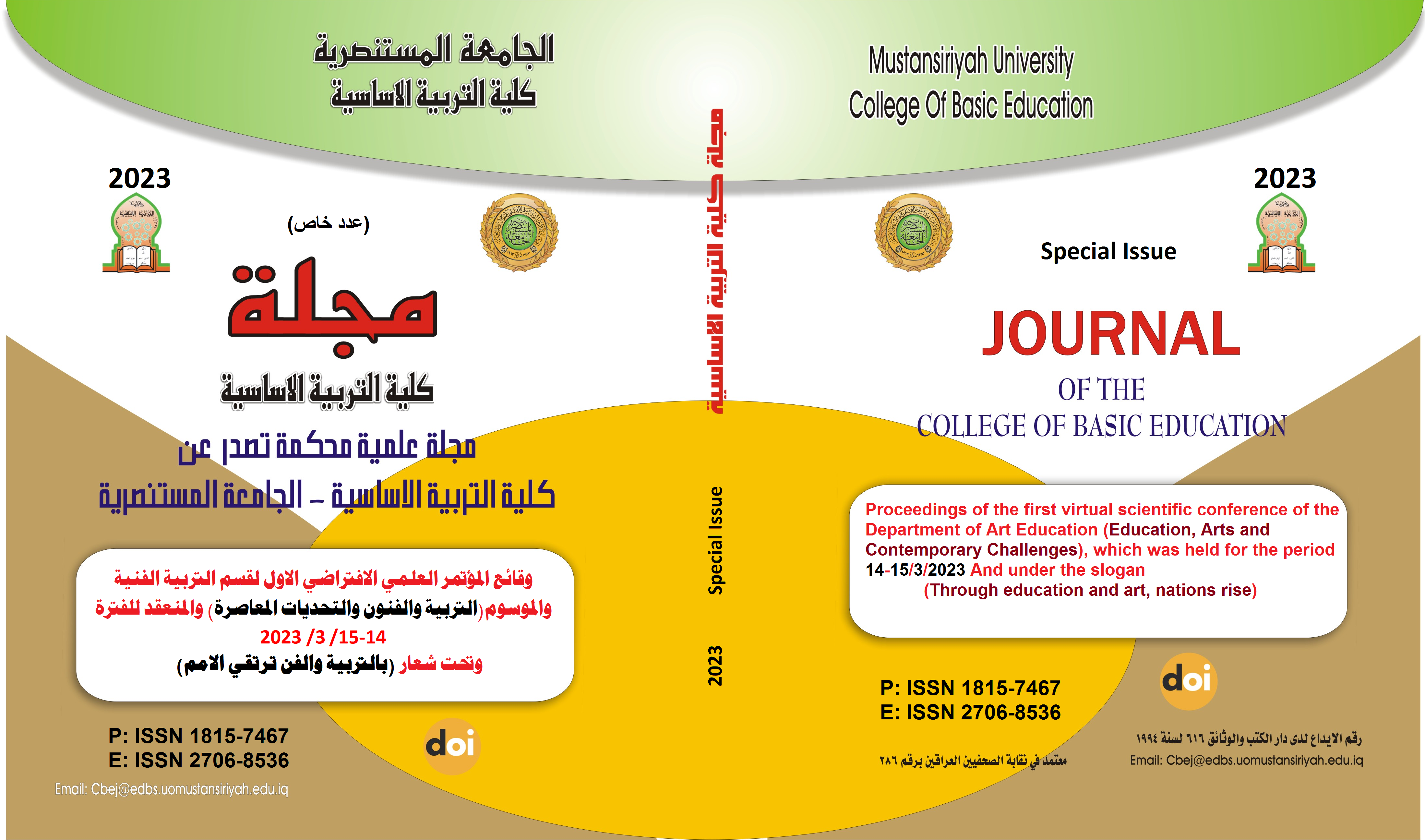The impact of the LED strategy on developing square kufic calligraphy skills among students of the Department of Art Education
Main Article Content
Abstract
The current research aims to:
- Examining the impact of the LED strategy on developing the skills of square kufic calligraphy among students of the Department of Rich Education. In order to verify the objective, the null hypothesis was imposed:
- There are no statistically significant differences at the level (0.05) between the mean scores of the experimental group that studied according to the LEED strategy and the control group that studied according to the usual method in the post skill test. The researchers adopted the experimental design with a pre and posttest, and the research community consisted of students of the second stage, the morning study for the academic year 2022-2023, and the size of the community reached (173) male and female students, and the research sample was drawn from the random method, and the sample size was (70) students And a female student, from the second stage, the morning study, divided into two halls. Hall (2) was chosen to represent the experimental group and Hall (4) to represent the control group.
A skill test was built for the square Kufic line, and this test was presented to a number of experts to verify its validity in order to measure the goal that was set to measure it. The researchers reached the following results: "There are statistically significant differences at the level (0.05) between the mean scores of the experimental group that studied according to the LEED strategy and the control group that studied according to the usual method with the post skill test." It was found that the experimental group, who studied the square kufic script according to the hand strategy, was superior to the students of the control group who studied according to the usual method.
By interpreting the results, the researchers reached a number of conclusions:
1- The students' performance level improved in the skill of writing square Kufic letters.
2- The LED strategy helped improve students' performance in writing the square Kufic letter syllables and linking more than one letter.
3- The use of Led Zadeh strategy increases students' motivation towards learning the skills of square Kufic calligraphy among the research sample of second-stage students in the Department of Art Education.
4- The use of the hand strategy helped the students in the sample to employ the letters of the square Kufic script in producing and designing different geometric artistic formations for honorable hadiths, wisdom and proverbs from the popular heritage.
In light of this, the researchers put a number of recommendations and proposals
- The two researchers recommend using the LEAD strategy in teaching because it enables students to master manual skills and absorb technical and cognitive concepts.
Benefiting from the LEAD strategy in teaching Arabic calligraphy and Islamic decoration in basic education faculties.
Colleges and institutes of fine arts, and institutions that teach Arabic calligraphy.
Suggestions:
The two researchers suggest conducting a number of studies according to the following strategy:
The effectiveness of instructional design according to the LEAD strategy in developing the competencies of art education teachers.
The impact of the LED strategy on developing creative thinking among students of fine arts institutes in Arabic calligraphy.
Article Details

This work is licensed under a Creative Commons Attribution-ShareAlike 4.0 International License.
